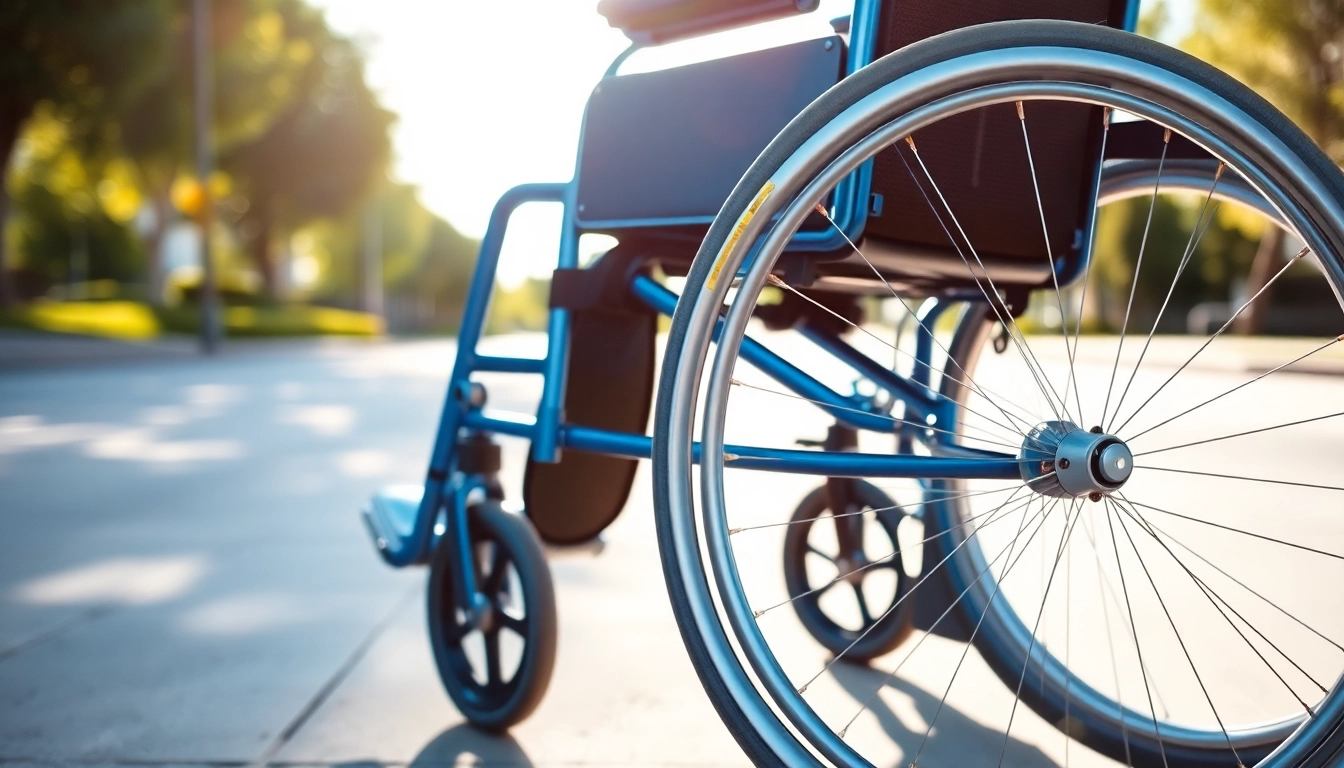1. Understanding Manual Wheelchairs
1.1 What is a Manual Wheelchair?
A manual wheelchair is a mobility device that allows individuals with limited mobility to navigate their environment independently or with the help of a caregiver. Unlike electric wheelchairs, manual wheelchairs are powered by human effort, typically through the use of push rims attached to the wheels. While they come in various sizes and styles, they share the common feature of being lightweight and easy to maneuver, making them an ideal choice for many users.
1.2 Key Components of a Manual Wheelchair
Understanding the components of a manual wheelchair is crucial for selecting the right model and ensuring its functionality. Here are the key parts:
- Frame: The structure that supports the entire wheelchair, usually made of lightweight materials such as aluminum or steel for durability.
- Wheels: Consist of rear wheels and smaller front casters. The size and quality of the wheels affect how the wheelchair performs on different surfaces.
- Seat and Backrest: Designed for comfort, these components are often padded and can have adjustable features to suit the user’s preferences.
- Armrests: Provide support and comfort, and they may be fixed, adjustable, or removable.
- Brakes: Essential for safety, they allow the user to secure the wheelchair when not in motion.
1.3 Benefits of Using Manual Wheelchairs
Manual wheelchairs offer numerous benefits, including:
- Cost-Effectiveness: Generally less expensive than electric wheelchairs, making them accessible to a wider range of users.
- Physical Exercise: Provides users with an opportunity to engage in physical activity, promoting upper body strength and cardiovascular health.
- Portability: Lightweight designs make manual wheelchairs easier to transport in vehicles or public transport.
- Enhanced Mobility: Offers the ability to navigate tight spaces and terrains where larger power wheelchairs may struggle.
2. Types of Manual Wheelchairs
2.1 Standard vs. Lightweight Manual Wheelchair
Manual wheelchairs generally fall into two categories: standard and lightweight. Standard manual wheelchairs are typically designed for durability and cost-effectiveness, often used in institutional settings or for daily activities. These may weigh upwards of 50 pounds and are suited for users who do not need to carry or transport the wheelchair frequently.
On the other hand, lightweight manual wheelchairs are designed for easier maneuverability and transportability, weighing between 30 to 40 pounds. These models are ideal for individuals who have an active lifestyle or need to travel frequently.
2.2 Specialized Manual Wheelchairs for Specific Needs
Not all manual wheelchairs are created equal. Various specialized designs help accommodate specific health conditions or lifestyle needs:
- Pediatric Wheelchairs: Designed specifically for children with adjustable features to grow with them.
- Sport Wheelchairs: Built for athletic activities, these wheelchairs feature lightweight materials and specialized designs to enhance performance in sports like basketball or tennis.
- All-Terrain Wheelchairs: Equipped with larger, sturdier wheels to navigate rougher terrains like gravel paths or sandy beaches.
2.3 Customizing Your Manual Wheelchair
Customization is an essential aspect of manual wheelchairs, allowing users to tailor their mobility device to meet personal needs. Key customization options include:
- Seat Width and Depth: Ensures a comfortable fit and enhances posture.
- Backrest Height and Angle: Can help improve comfort and support the user’s back properly.
- Accessories: Include features such as cup holders, storage bags, or specialized footrests depending on the user’s preferences and mobility needs.
3. Choosing the Right Manual Wheelchair
3.1 Assessing User Needs and Lifestyle
Choosing the right manual wheelchair begins with a thorough assessment of the user’s needs and lifestyle. Key questions to consider include the user’s average activity level, environment (e.g., home vs. outdoor use), and physical limitations. Spending time in a demonstrations of different models can provide a better idea of which design works best.
3.2 Key Features to Consider
Several features significantly influence wheelchair functionality and user experience. When selecting a manual wheelchair, consider:
- Weight: Lighter wheelchairs are easier to transport. Consider the weight in relation to the user’s ability to self-propel.
- Frame Design: Rigid frames offer stability and speed, while folding frames may provide portability.
- Wheel Type: Pneumatic tires offer a smoother ride, while solid tires are maintenance-free and more durable.
3.3 Budgeting for Your Manual Wheelchair
Budgeting for a manual wheelchair involves not just the purchase cost but also long-term expenses such as maintenance and accessories. On average, good quality manual wheelchairs can range from $300 to $3,000. It’s essential to balance quality and affordability while considering the value of comfort, durability, and support features that may justify a higher investment.
4. Maintenance Tips for Manual Wheelchairs
4.1 Regular Inspections and Upkeep
Maintaining a manual wheelchair requires regular inspections to ensure its safety and functionality. Users should routinely check for:
- Tightness of screws and bolts
- Brake functionality
- Wear on tires and bearings
- Condition of the seat and backrest
4.2 Cleaning Your Manual Wheelchair
Regular cleaning is critical to prolonging the life of the wheelchair. Procedures include:
- Wiping down the frame and components with a damp cloth
- Using mild soap and water for removing stubborn stains
- Checking for and cleaning dirt or debris from the wheels and brakes
4.3 Troubleshooting Common Issues
Common issues can arise with manual wheelchairs, such as:
- Flat Tires: Check if the tires need air or if they require replacement.
- Worn Brakes: Adjust or replace brakes if they do not engage properly.
- Loose Wheels: Tighten the wheel assembly if there are wobbles or rattles.
5. Resources and Support for Manual Wheelchair Users
5.1 Online Communities and Forums
Connecting with other wheelchair users can provide invaluable support. Online forums and communities allow users to share experiences, tips, and advice on managing daily challenges. Websites like Wheelchair Junkie or Wheelhouse offer spaces for discussion and community building.
5.2 Consulting Professionals for Support
Healthcare professionals, such as occupational therapists or rehabilitation specialists, can provide guidance on selecting the right wheelchair and addressing any medical needs related to mobility. They can also offer personalized adjustments to ensure proper fitting and comfort.
5.3 Funding and Financial Assistance Resources
Affording a manual wheelchair can be challenging. Various organizations provide financial assistance, including grants and funding through non-profits, insurance companies, and government programs that support individuals with disabilities. It’s essential to research and understand the available resources in your area to obtain the necessary financial support.



